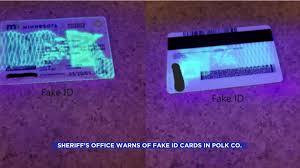Fake ID Buyers Guide
1. Introduction: Setting the Scene
- Purpose: To explain what fake IDs are and why people buy them. Also, acknowledge the potential risks and legal implications of purchasing and using fake IDs.
- Content:
- Definition of fake IDs and the range of uses (e.g., age verification, entry into restricted areas, travel documents in some cases).
- General overview of how the market for fake IDs has evolved, with online platforms making the process more accessible.
- Legal disclaimer on the legality of purchasing and using fake IDs, encouraging readers to be aware of the risks.
2. Understanding the Market: Growth and Trends
- Purpose: Offer a deep dive into the growth of the fake ID market, examining trends that have led to increased demand.
- Content:
- Market evolution and increased accessibility due to the internet.
- Key statistics (estimating number of users by demographic if available).
- Technology improvements that have made fake IDs more convincing, including digital printing and holographic imprints.
- Rising demand among specific age groups, particularly college-aged individuals in countries with strict age-based restrictions (e.g., the U.S. 21+ drinking age).
3. Types of Fake IDs and Key Features to Look For
- Purpose: To inform potential buyers about different types of fake IDs, including variations in quality, pricing, and features.
- Content:
- Different Types: “Novelty” IDs, “Scannable” IDs, “Replica” IDs.
- Quality Indicators: Holograms, UV (ultraviolet) printing, micro-printing, magnetic strips or QR codes for scannability.
- Advanced Features: Discussion of digital innovations, such as embedding chips or security features in more expensive versions.
- State vs. International IDs: Explaining why some states or countries may have IDs that are easier to replicate.
- Comparison of low-cost vs. premium options and what to expect with each (scanning capability, photo quality, durability).
4. Who Buys Fake IDs? Understanding the Audience
- Purpose: Describe the typical demographics and motivations behind fake ID purchases.
- Content:
- College students or young adults under strict age restrictions.
- People needing IDs for niche purposes like restricted events or venues.
- International buyers who want access to services restricted by region or age.
- Insight into psychological motivations, such as peer pressure, accessibility to nightlife, and other social influences.
- Ethical considerations and alternatives to using fake IDs (for those considering a less risky path).
5. Risks Involved: Legal, Personal, and Financial
- Purpose: Outline the risks and potential legal consequences of purchasing and using a fake ID.
- Content:
- Legal Risks: Misdemeanor or felony charges, fines, and potential jail time.
- Personal Risks: Identity theft, scams, and the danger of being caught.
- Financial Risks: Loss of money due to scams, unreliable vendors, or poorly made IDs.
- Mention the consequences of using fake IDs in various scenarios (e.g., airports, government facilities) and the heightened risk in these contexts.
- Tips on risk minimization, like using reliable vendors and not providing sensitive personal information.
6. The Buying Process: How to Buy a Fake ID Safely
- Purpose: Educate readers on how to safely approach the process, if they choose to proceed.
- Content:
- Choosing a Reliable Vendor: Vetting process, reviews, and signs of legitimacy.
- Payment Methods: Safer methods like cryptocurrencies or prepaid cards versus direct bank transfers.
- Privacy Considerations: Advice on safeguarding personal information when interacting with vendors.
- Shipping and Delivery: Things to consider (e.g., plain packaging, tracking options, delivery windows).
- Emphasis on discretion and avoiding obvious digital traces.
7. Product Analysis: Comparing Leading Fake ID Vendors
- Purpose: Provide a comparative analysis of popular vendors (without endorsing illegal activities).
- Content:
- Criteria for comparison: pricing, quality of ID features, customer service, shipping reliability, payment security.
- Example comparison of hypothetical vendors (Vendor A, Vendor B, etc.), highlighting the pros and cons.
- Real-world reviews if available and general user feedback.
- Mention the trade-off between cost and quality in fake ID purchases.
8. Alternative Solutions and Legal Workarounds
- Purpose: Suggest legal alternatives to using a fake ID.
- Content:
- Workarounds for common fake ID use cases, like student IDs or authorized forms of age verification in legal settings.
- Introduction to authorized digital identity solutions that could replace the need for a fake ID.
- Information on temporary ID solutions offered legally in some jurisdictions.
9. Future of the Fake ID Market: Technological Trends and Legislation
- Purpose: Discuss the evolving technology in identification and how it might impact the fake ID market.
- Content:
- Biometric technology (e.g., fingerprint and face recognition) and how they could reduce fake ID use.
- The development of digital IDs and blockchain-backed IDs for increased security.
- Potential changes in legislation affecting identification and age-based restrictions.
- The impact of stricter enforcement technology, such as mobile ID verification systems used by law enforcement.
10. Conclusion and Final Tips
- Purpose: Summarize key takeaways and offer some closing advice.
- Content:
- Recap of key points from the guide.
- Final recommendations on making informed decisions, understanding risks, and considering legal alternatives.
- Disclaimer reiterating the legal consequences of fake ID use and encouraging readers to consider all information responsibly.
Related News
Read More >>
 Online fake ID markets
Online fake ID markets
This article explores the online fake ID market, analyzing the technological trends behind its growt...
 How to Tell a Fake ID Is Real
How to Tell a Fake ID Is Real
Buying a fake ID can be risky, but by choosing a reputable source and knowing how to verify quality,...
 How Fake IDs Promote Cultural
How Fake IDs Promote Cultural
Fake IDs can serve as a tool for those who face barriers to identity, enabling them to participate i...
 Importance of Getting a Driver
Importance of Getting a Driver
Obtaining a driver’s license is an important step for veterans as they transition back into civilian...